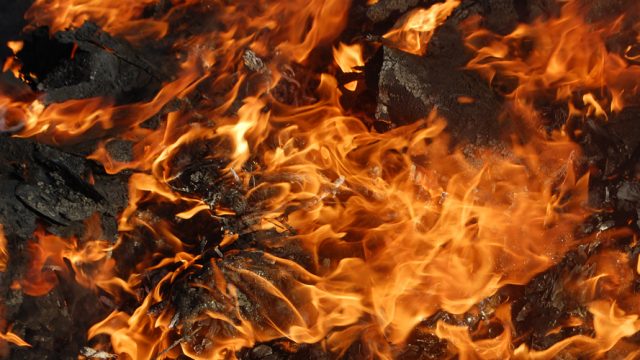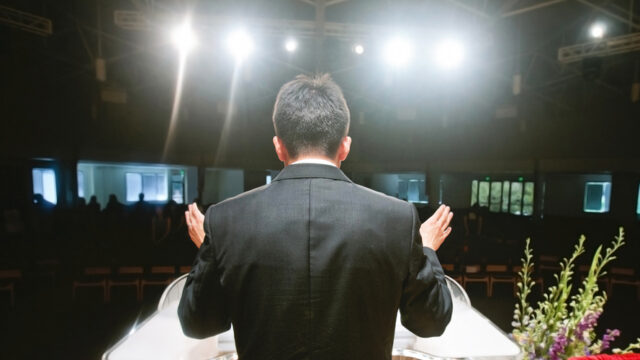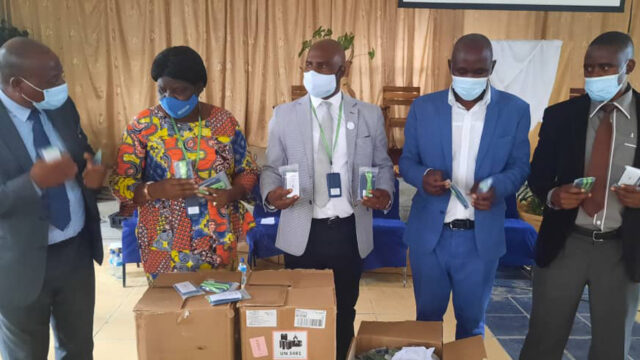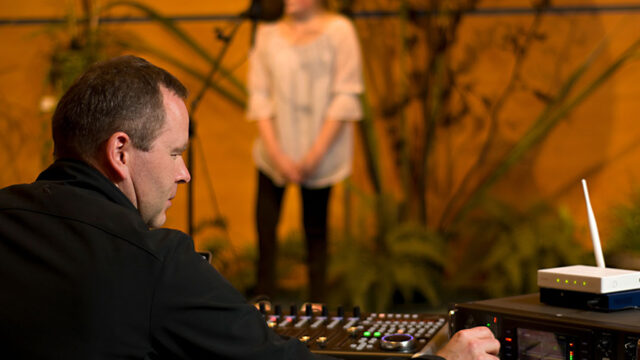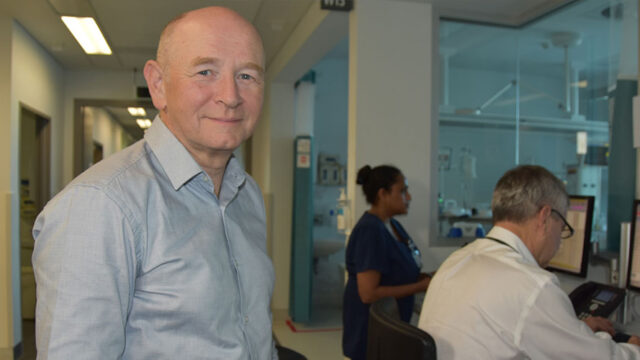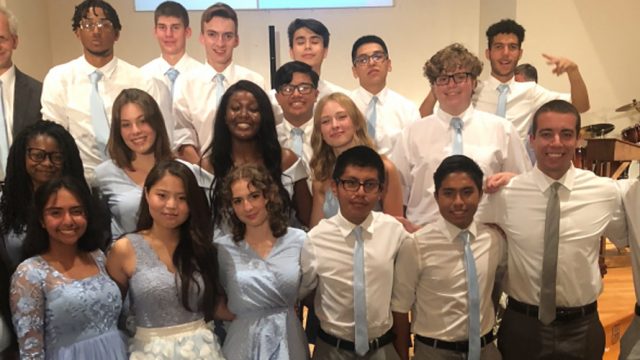Adventists in Dominica recall the fateful night Hurricane Maria levelled their island.
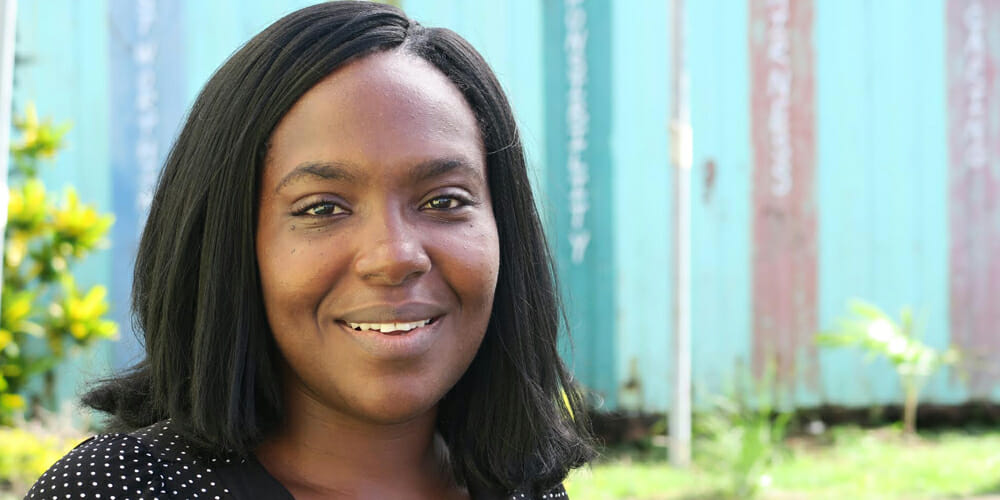
On September 18, 2017, Hurricane Maria crashed into Dominica and devastated everything in her path. This is the first of a two-part story about what happened and how it affected Seventh-day Adventist members and churches on the island. ~ Editors
She thought they were going to die.
Darnelle Celestine and her husband were standing against the remaining walls of their home. Their young daughters huddled against them, cowering as the rain beat down on their heads and the water rose to their ankles. They listened in terror as the ferocious winds of Hurricane Maria screamed through their island and tore their house apart.
“The wind kept battering the house. And the roof eventually was lost to the wind, and the ceiling started imploding,” recalls Celestine. “Then the back, the walls started falling down and the hurricane came into the house.”
Debris began to swirl inside. Celestine watched as things slammed against each other and the walls and circled through the structure. The children started to whimper. They were cold, drenched, and exhausted. Celestine knew what was left of her house would not last, so she and her husband sketched out a plan. Across the street, there was a hospital, and it was probably their best chance of survival. However, they had to get the timing right. Running blindly into a hurricane with flying objects was a form of suicide. Celestine and her husband waited until there was a lull in the storm.
“There was still a lot of wind and rain, but we had no choice. We figured it would be the only time that we would have to leave the house. So, we ran, and we prayed. We trusted God would get us to the hospital,” says Celestine, who is a teacher at Arthur Waldron Academy, Dominica’s only Seventh-day Adventist secondary school.
Normally, the walk from the house to the hospital takes minutes. But that night, Celestine says the distance felt interminable.
“It was dark. We had the lights from our phones. There was so much debris in the yard, and we had to climb over the gate because we couldn’t open it. There was also a 40-foot container that had been moved. We had to navigate through that debris on the ground and around us.”
Finally, the family made it to the hospital and rushed through the doors. They were safe at last, and they stayed there until the storm subsided. The sun rose on a new day—and a new Dominica.
Worst Night of Their Lives
The weekend before Maria pummeled the island, people were warned about a coming storm. They entered the weekend believing that a category 2 hurricane was headed their way. Later, it was upgraded to a category 5—the highest level for a hurricane and a way to predict potential disaster, but it was still just a number to the inexperienced. After all, what was a five? How could anyone have truly understood the monstrosity of such a storm?
The wind started on the evening of Monday, September 18, 2017. After that, it never stopped. Hurricane Maria sat on Dominica, gaining power as it moved slowly across the mountainous terrain. The storm howled. It screamed. It was the sound of torrential rain and 160 miles-per-hour winds, tearing the country to shreds. The storm snapped trees in half and yanked them from the earth. It pounded little houses, crumbling stucco, shattering windows, and blasting off doors. Metal roofs peeled back, like a pull-top on a can of soup, then ripped through the dark sky—a tangled sheet of shrapnel—before landing on houses, cars, trees, rivers, and oceans.
People endured this for hours, tucked in the safest space they could find. People said they screamed. Cried. Sang songs. Others sat in silence. Most prayed.
In the morning, Dominicans crawled out from their shelters to a different kind of trouble. The destruction was formidable. The island, which was blanketed by green foliage just hours before, was naked and brown. Entire buildings had blown away. Roads were impassable from the debris and mud. The electricity was out.
Celestine remembers wandering her neighborhood the next day.
“Well, first we went back to the house, and it was just terrible,” says Celestine. “We had stuff from the house on the road and in the yard. We had clothes in the rafters. Everything was just…the walls of our room had fallen on our beds. The beds were flattened.”
Her voice drops off and her eyes look downward as she pauses.
“It was terrible.”
Life After Maria
In the days and weeks following Hurricane Maria, aid organizations sent food, water, cleaning supplies, and tarps. With nothing left on the island, everything had to be shipped or flown in. Crews and volunteers began the herculean task of clearing tree trunks and trash. People patched their homes or resettled with family and friends.
In time, when some of the immediate needs were met, leaders began examining how to rebuild.
This included the reconstruction of Seventh-day Adventist Churches.
“The hurricane has dealt us a tremendous blow. We have 34 congregations on the island. We also have four schools. Twenty-eight of our churches have been destroyed, either lost their roof completely or have been completely flattened and destroyed by the hurricane,” says Felix Jack, the ministerial secretary for the Adventist Church in the east Caribbean.
When an entire nation has been flattened by natural disaster, the state of church buildings may seem a secondary or even tertiary concern. However, Adventist leaders saw that people need community.
“We realized there was a great need to bring the membership together. We needed them to come together for prayer. We needed them to come together to show solidarity and to show support,” says Jack. “We devised a strategy in finding places—alternative places—for the church family to meet and to be with each other. In some places, we had to organize the churches in cell groups or in the homes of individuals so that they can have this sense of spirituality and camaraderie and solidarity with each other.”
Everyone knew the solution was temporary. Ultimately, Dominica needed to rebuild the churches, and they needed help. So, in November 2017, the Adventist Church in Inter-America, which represents Central America, the Caribbean, and sections of South America, asked Maranatha for help in areas impacted by Hurricanes Irma (which passed through the Caribbean in August) and Maria.
“There is a great need for reconstruction on islands like Dominica, Barbuda, St. Maarten, and the U.S. Virgin Islands, and we want to bring Maranatha in to see how far they can help us in rebuilding properties and schools,” said Israel Leito, president of the Adventist Church in Inter-America.
After the meeting and an initial visit to the islands, Maranatha committed to help Dominica, which is among the hardest hit areas. This will be the second time Maranatha assists in reconstruction efforts in Dominica. In the 1980s, Maranatha helped to rebuild schools and homes after Hurricane David, a deadly storm, wrecked the country in 1979.
Nearly four decades later, Maranatha is coming back. In December 2017 and January 2018, Maranatha went to Dominica to assess the devastation and map out a plan.
“Our churches in Dominica have been pillars within the society, within the community. We have been serving the community—providing a place of refuge, a place of worship, a place where people can fellowship. A place where we can minister to our society. So not having the churches in these communities will be a great loss and a great travesty,” says Jack.
What to do, then?


